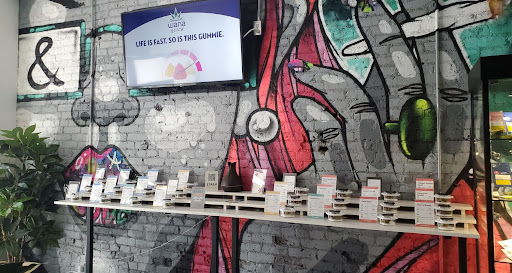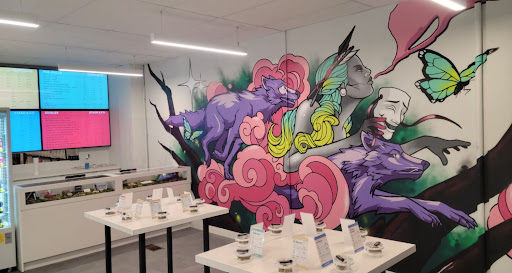Table of Contents
Cannabidiol (CBD) enhances the presence of cannabinoids which exist naturally in the human body. Learn how it functions and what to expect in this post. Of significance:
- CBD (unlike THC) often lacks intoxicating effects
- CBD interacts with the endocannabinoid system by promoting the release of endogenous cannabinoids
- As a natural substance, the CBD concentration of dried cannabis flower varies across products and batches
Cannabinoids are chemical compounds created naturally in our bodies as well as in certain plants. When found in people, these chemical compounds are referred to as “endocannabinoids”; when found in plants, they are referred to as “phytocannabinoids”.
Cannabidiol is the cannabinoid which occurs most frequently in cannabis. Even though it has the potential to affect both the mind and the body, CBD is not psychoactive and will not get you high. It may be present in the trichomes which cover the flower of many different types of cannabis.
CBD is often made available for purchase as an oil, or in the form of capsules after being extracted from the trichomes. Additionally, it can be used topically as a cream or salve; inhaled or eaten in the form of dried flowers; or consumed as an oil or as a product intended for human consumption.
How CBD Works
 Evidence to date suggests that CBD functions differently from THC (raising or enhancing the synthesis of our own endocannabinoids), rather than binding to the CB1 receptors in the human endocannabinoid system. This is due to the fact that CBD, on a molecular level, suppresses the synthesis of an enzyme in our body that’s responsible for regulating and destroying any excess endocannabinoids we produce naturally. Because of this, we end up with a higher level of our own endocannabinoids circulating in our bodies, which has an impact on how we feel physically.
Evidence to date suggests that CBD functions differently from THC (raising or enhancing the synthesis of our own endocannabinoids), rather than binding to the CB1 receptors in the human endocannabinoid system. This is due to the fact that CBD, on a molecular level, suppresses the synthesis of an enzyme in our body that’s responsible for regulating and destroying any excess endocannabinoids we produce naturally. Because of this, we end up with a higher level of our own endocannabinoids circulating in our bodies, which has an impact on how we feel physically.
Recent research suggests that CBD may also alter the effects of other naturally occurring chemicals in our bodies. These chemicals include serotonin, which affects our mood and stress levels; adenosine, which influences our sleep-wake cycle; and vanilloid, which plays a role in the modulation of pain.
CBD Ingredients
The amount of CBD in cannabis, commonly referred to as its “potency”, is measured in milligrams and represented as a percentage. For example, a CBD product with a percentage of 12% indicates that it has 120 milligrams of CBD for every gram (mg/g) of cannabis. It is essential to be aware that the amount of CBD present in a dried cannabis product can vary from one product to another (and also from one lot to another) since CBD is a natural component of the plant. Additionally, any and all information on the CBD content of our goods comes directly from the federally licensed manufacturers from whom we obtain the product.
CBD and THC
Cannabinoids and other substances found in cannabis plants and products are hypothesized to function together to magnify or alter the effects of cannabis. This concept is referred to as “the entourage effect” and it continues to be under investigation from the scientific community.
In addition, a number of studies have shown that the use of CBD in conjunction with THC seems to mitigate some of the euphoric effects brought on by THC. Therefore, choosing a product with comparable concentrations of CBD and THC may help mitigate the overpowering or undesirable effects (such as anxiety or paranoia) that are sometimes linked with taking large quantities of THC.
Visit Stash & Co. online for more information on CBD, or call us at (647) 522-1736 today.




